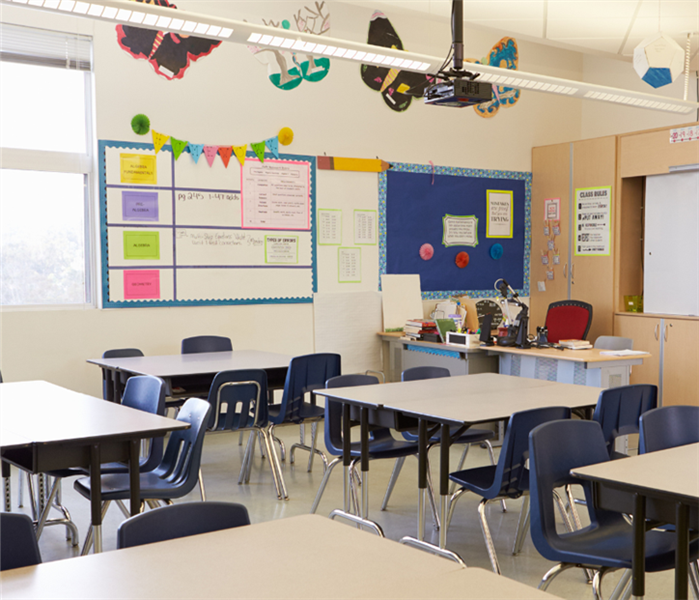Cleaning Tips for Classrooms
12/12/2022 (Permalink)
In East TN you find yourself knowing everyone. Especially if you are a teacher. So we wanted to give all you educators out there some tips on keeping that classroom save and sanitized.
Cleaning, Sanitizing, and Disinfecting Know the difference between cleaning, sanitizing, and disinfecting.
Use the right product for the task:
- CLEANING removes dirt and most germs. Use soap and water. Choose green cleaners certified by a third party such as Green Seal or EPA’s Safer Choice. In the classroom, cleaning is the focus.
- SANITIZING reduces germs to safe levels, for example in food service environments. Food code regulations have specific requirements for sanitizers in the cafeteria and kitchen.
- DISINFECTING kills most germs, depending on the type of chemical, and only when used as directed on the label. In schools, custodial staff use disinfectants and sanitizers regularly only in high-risk areas – nurse’s office, bathrooms, cafeterias, kitchens, drinking fountains, sink and door handles, and athletic facilities, preferably when students are not present. Overuse does not provide any additional protection and can expose students and staff to harmful chemicals. Students should never use disinfectants. Disinfectant wipes shouldn't be used to clean hands. This includes Clorox wipes. If students are helping to clean:
- They should only use soap and water.
- Fragrance-free baby wipes could be used for quick cleaning.
- Most store-bought cleaning products are not safe for children to use.
(source: https://www.doh.wa.gov/Portals/1/Documents/Pubs/333-218.pdf)



 24/7 Emergency Service
24/7 Emergency Service
